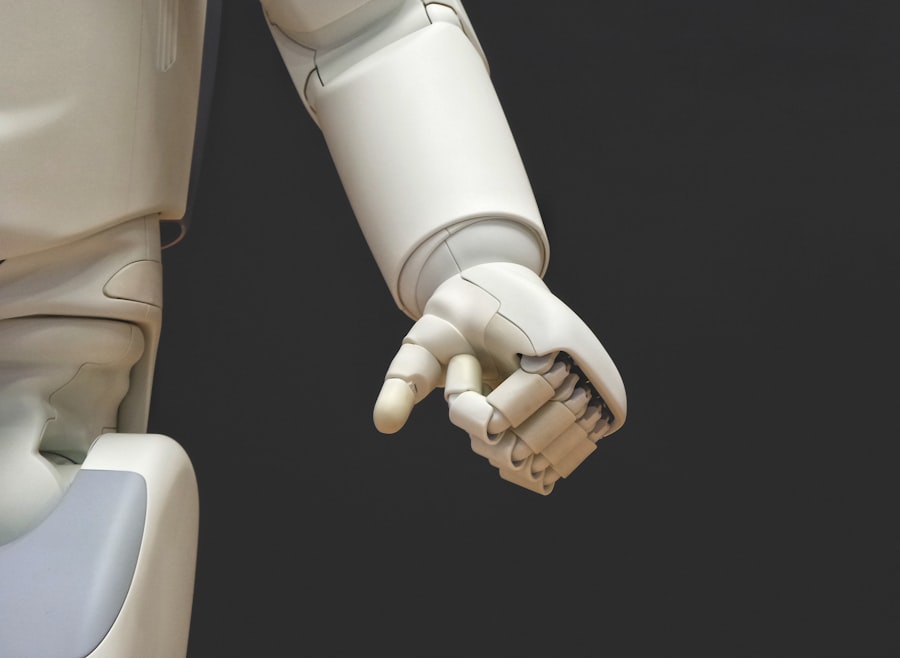
- By: admin
- Category: Commercial Floor Cleaning Machines
- 0 comment
In the ever-evolving landscape of commercial cleaning, robotic floor scrubbers have emerged as a game-changer. These autonomous machines are designed to efficiently clean large floor areas with minimal human intervention. Equipped with advanced sensors and artificial intelligence, robotic floor scrubbers navigate through various environments, adapting to obstacles and ensuring a thorough clean.
Their design often incorporates features such as adjustable scrubbing pressure, water usage control, and real-time mapping, making them an invaluable asset for facility managers and contract cleaners alike. The technology behind robotic floor scrubbers has advanced significantly in recent years. Many models now come with sophisticated navigation systems that allow them to create detailed maps of the areas they clean.
This capability not only enhances their efficiency but also ensures that no corner is left untouched. As these machines continue to evolve, they are becoming increasingly user-friendly, with intuitive interfaces that allow operators to programme cleaning schedules and monitor performance from a distance. Understanding the mechanics and capabilities of these machines is crucial for those in the commercial cleaning sector, as it can lead to improved operational efficiency and cost savings. I highly recommend investing in a commercial floor scrubber for your business to maintain clean and hygienic floors.
Summary
- Robotic floor scrubbers are automated machines designed to clean and scrub floors without human intervention, using advanced sensors and technology.
- Advantages of robotic floor scrubbers include increased efficiency, reduced labour costs, improved cleaning quality, and enhanced safety for workers.
- Considerations for implementing robotic floor scrubbers include initial investment costs, facility layout and size, and the need for staff training and maintenance.
- Types of facilities suitable for robotic floor scrubbers include warehouses, manufacturing plants, hospitals, airports, and retail spaces.
- Cost analysis of robotic floor scrubbers should take into account initial purchase or lease costs, ongoing maintenance, and potential savings in labour and cleaning supplies.
Advantages of Robotic Floor Scrubbers
Autonomous Operation
One of the most significant benefits is their ability to operate autonomously, freeing up human resources for more complex tasks. This not only optimises labour costs but also allows staff to focus on areas that require a human touch, such as customer service or detailed cleaning tasks.
Consistency and Precision
Furthermore, robotic scrubbers can work around the clock, providing consistent cleaning without the need for breaks or downtime, which is particularly advantageous in high-traffic environments. Another key advantage is the precision and consistency that robotic floor scrubbers offer. Unlike traditional cleaning methods, which can vary in effectiveness depending on the operator’s skill and attention, robotic machines deliver uniform results every time.
Hygiene and Sustainability
This consistency is crucial in maintaining hygiene standards, especially in facilities such as hospitals or food processing plants where cleanliness is paramount. Additionally, many robotic scrubbers are designed to use less water and cleaning solution than their manual counterparts, contributing to both cost savings and environmental sustainability.
Considerations for Implementing Robotic Floor Scrubbers

While the benefits of robotic floor scrubbers are clear, there are several considerations that facility managers must take into account before implementation. First and foremost is the initial investment cost. Although prices have decreased over the years, acquiring a robotic scrubber still represents a significant expenditure.
It’s essential to conduct a thorough cost-benefit analysis to determine whether the long-term savings in labour and cleaning supplies justify this upfront investment. Another important factor is the compatibility of robotic scrubbers with existing cleaning protocols and infrastructure. Facilities with complex layouts or numerous obstacles may require additional planning to ensure that the machines can navigate effectively.
Moreover, staff training is crucial; employees must be equipped with the knowledge to operate and troubleshoot these machines efficiently. A well-thought-out implementation strategy that includes training sessions and ongoing support will help ensure a smooth transition to robotic cleaning solutions.
Types of Facilities Suitable for Robotic Floor Scrubbers
Robotic floor scrubbers are particularly well-suited for a variety of commercial and industrial environments. Large retail spaces, such as supermarkets and shopping centres, benefit greatly from these machines due to their ability to cover vast areas quickly and efficiently. The high foot traffic in these locations necessitates regular cleaning, making robotic scrubbers an ideal solution for maintaining cleanliness without disrupting customers.
Additionally, warehouses and distribution centres are prime candidates for robotic floor scrubbers. The expansive floor space and often cluttered environments can be challenging for manual cleaning methods. Robotic scrubbers can navigate around obstacles such as pallets and shelving units while ensuring that floors remain clean and safe for workers.
Furthermore, educational institutions like schools and universities can also leverage these machines to maintain hygiene standards across large campuses, allowing custodial staff to focus on other essential tasks.
Cost Analysis of Robotic Floor Scrubbers
When considering the financial implications of investing in robotic floor scrubbers, it’s essential to look beyond the initial purchase price. While these machines can be costly upfront, they often lead to significant savings over time. For instance, the reduction in labour costs is one of the most immediate benefits; robotic scrubbers can operate independently, allowing facilities to reallocate staff to more critical roles or reduce overall staffing needs.
Moreover, robotic floor scrubbers typically use less water and cleaning solution than traditional methods, leading to lower operational costs. The efficiency of these machines also means they can complete cleaning tasks in a fraction of the time it would take a human operator, further enhancing productivity. When conducting a cost analysis, it’s vital to consider factors such as maintenance costs, potential downtime, and the longevity of the equipment.
Many manufacturers offer warranties and service packages that can mitigate some of these expenses, making it easier for facilities to budget for their robotic cleaning solutions.
Maintenance and Training for Robotic Floor Scrubbers

Proper maintenance is crucial for ensuring the longevity and effectiveness of robotic floor scrubbers. Regular upkeep not only prolongs the life of the equipment but also ensures optimal performance during cleaning operations. Facility managers should establish a routine maintenance schedule that includes tasks such as checking battery levels, inspecting brushes and pads for wear, and ensuring that sensors are clean and functioning correctly.
Many manufacturers provide guidelines on maintenance procedures, which can be invaluable for facility teams. Training staff on how to operate and maintain robotic floor scrubbers is equally important. While these machines are designed to be user-friendly, understanding their features and capabilities can significantly enhance their effectiveness.
Training sessions should cover everything from basic operation to troubleshooting common issues. Additionally, ongoing training can help staff stay updated on any software upgrades or new features that may be introduced over time.
Environmental Impact of Robotic Floor Scrubbers
As sustainability becomes an increasingly important consideration for businesses worldwide, the environmental impact of cleaning solutions cannot be overlooked. Robotic floor scrubbers are designed with eco-friendliness in mind; many models utilise advanced technology that minimises water usage while maximising cleaning efficiency. This not only conserves valuable resources but also reduces the amount of chemical cleaning agents required, leading to a lower environmental footprint.
Furthermore, by improving cleaning efficiency and reducing waste, robotic scrubbers contribute positively to a facility’s overall sustainability goals. Facilities that adopt these machines often find that they can achieve higher cleanliness standards while simultaneously reducing their impact on the environment. This dual benefit makes robotic floor scrubbers an attractive option for businesses looking to enhance their green credentials while maintaining high operational standards.
Future Trends in Robotic Floor Scrubbing Technology
The future of robotic floor scrubbing technology looks promising as advancements continue to emerge at a rapid pace. One notable trend is the integration of artificial intelligence (AI) and machine learning capabilities into these machines. As AI technology evolves, robotic scrubbers will become even more adept at navigating complex environments and adapting their cleaning strategies based on real-time data analysis.
Additionally, advancements in battery technology are likely to extend the operational time of these machines significantly. Longer battery life means less downtime for charging and more efficient cleaning cycles, which is particularly beneficial in large facilities where time is of the essence. Furthermore, as connectivity improves with IoT (Internet of Things) integration, facility managers will have access to real-time data on cleaning performance and machine status through mobile applications or cloud-based platforms.
In conclusion, robotic floor scrubbers represent a significant advancement in commercial cleaning technology. Their ability to operate autonomously while delivering consistent results makes them an attractive option for various facilities. As businesses continue to seek ways to improve efficiency and sustainability in their operations, understanding the advantages, considerations, costs, maintenance requirements, environmental impact, and future trends associated with robotic floor scrubbers will be essential for making informed decisions in this rapidly evolving industry.
FAQs
What are robotic floor scrubbers?
Robotic floor scrubbers are autonomous machines designed to clean and scrub hard floor surfaces. They are equipped with sensors and advanced technology to navigate and clean efficiently without human intervention.
How do robotic floor scrubbers work?
Robotic floor scrubbers use a combination of sensors, cameras, and mapping technology to navigate and clean floors. They are programmed to follow a specific cleaning path and can avoid obstacles and adjust their cleaning patterns as needed.
What are the benefits of using robotic floor scrubbers?
Robotic floor scrubbers can increase cleaning efficiency, reduce labour costs, and improve cleaning consistency. They can also help in reducing the use of water and cleaning chemicals, making them more environmentally friendly.
Are robotic floor scrubbers suitable for all types of facilities?
Robotic floor scrubbers are suitable for a wide range of facilities, including warehouses, manufacturing plants, retail spaces, healthcare facilities, and educational institutions. However, the suitability of a robotic floor scrubber depends on the specific needs and layout of the facility.
What factors should be considered when deciding if robotic floor scrubbers are right for a facility?
When considering robotic floor scrubbers for a facility, factors such as the size of the facility, the layout of the floors, the type of flooring, and the cleaning requirements should be taken into account. Additionally, the initial investment cost and maintenance requirements should also be considered.
